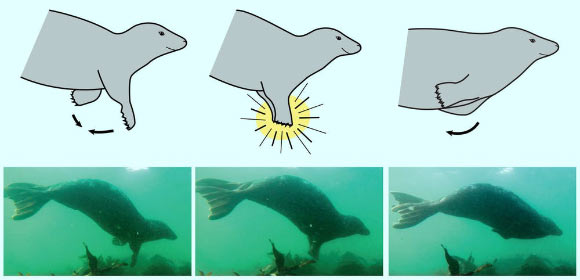A video recorded underwater by marine biologists shows a gray seal (Halichoerus grypus) clapping in the wild, producing a gunshot-like ‘crack.’
“The discovery of ‘clapping seals’ might not seem that surprising, after all, they’re famous for clapping in zoos and aquaria,” said Dr. David Hocking, a researcher in the School of Biological Sciences at Monash University.
“But where zoo animals are often trained to clap for our entertainment — these gray seals are doing it in the wild of their own accord.”
The video footage, filmed by Newcastle University naturalist Ben Burville, shows a male gray seal clapping its paw-like flippers to produce a gunshot-like ‘crack’ sound.
“The clap was incredibly loud and at first I found it hard to believe what I had seen,” Burville said.
“How could a seal make such a loud clap underwater with no air to compress between its flippers?”
“Other marine mammal species can produce similar types of percussive sound by slapping the water with their body or tail,” said Monash University’s Dr. Alistair Evans.

Gray seals use their short paw-like forelimbs to make loud clapping sounds underwater. Image credit: Ben Burville / David Hocking.
The loud high-frequency noise produced by clapping cuts through background noise, sending out a clear signal to any other seals in the area.
“Depending on the context, the claps may help to ward off competitors and/or attract potential mates,” Dr. Hocking said.
“Think of a chest-beating male gorilla, for example. Like seal claps, those chest beats carry two messages: I am strong, stay away; and I am strong, my genes are good.”
“Clapping seals demonstrates just how much there still is to learn about the animals living around us.”
Clapping appears to be an important social behavior for gray seals, so anything that disturbed it could impact breeding success and survival for this species.
“Human noise pollution is known to interfere with other forms of marine mammal communication, including whale song,” Dr. Hocking said.
“But if we do not know a behavior exists, we cannot easily act to protect it.”
A paper on the findings was published in the journal Marine Mammal Science.
_____
David P. Hocking et al. Percussive underwater signaling in wild gray seals. Marine Mammal Science, published online January 31, 2020







